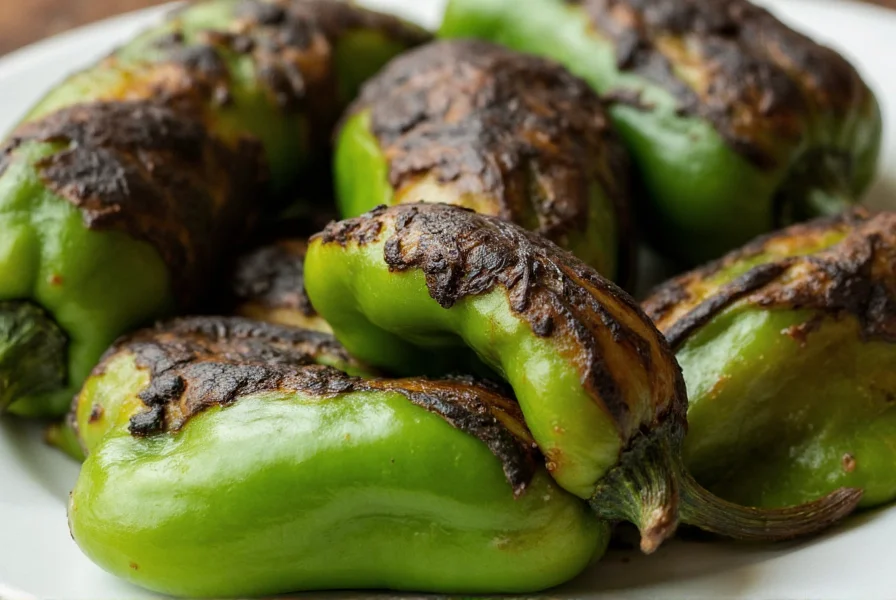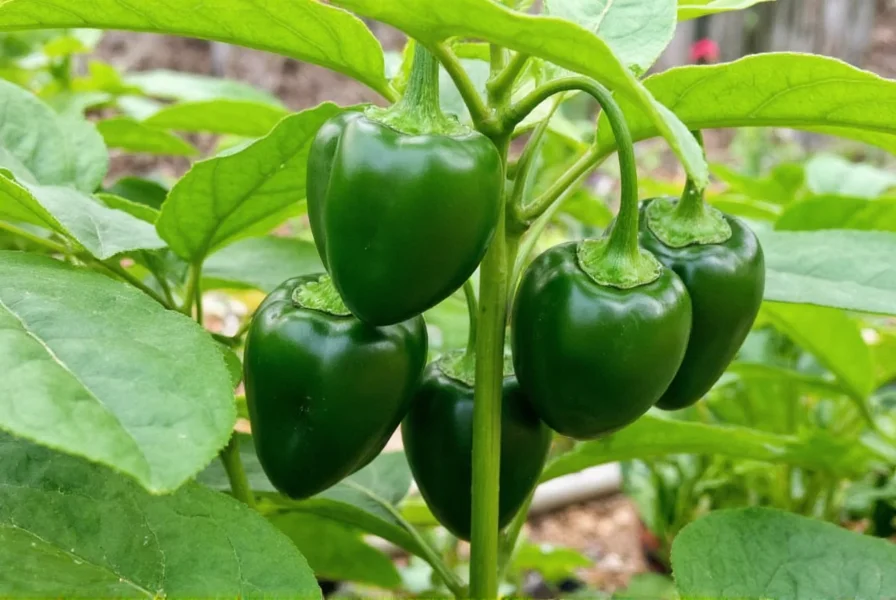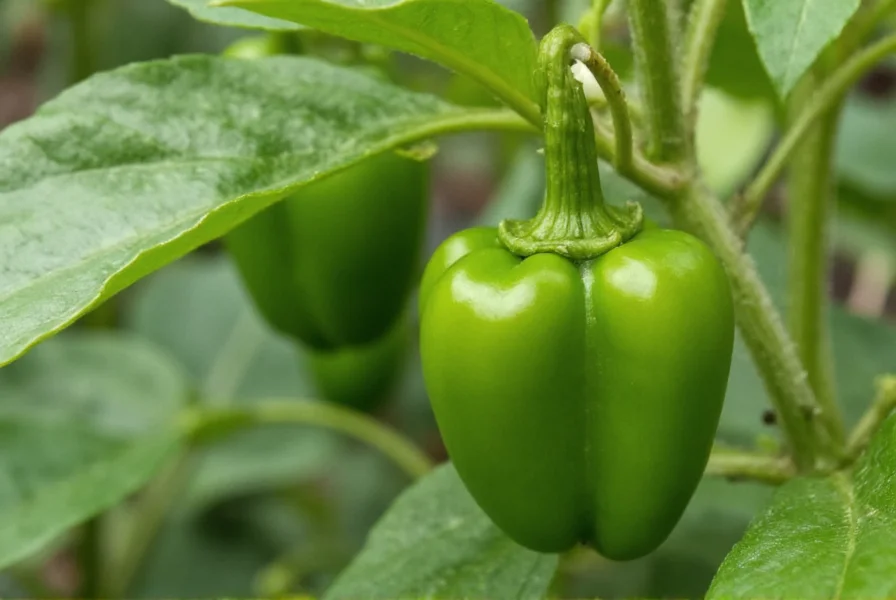The poblano chili pepper ( Capsicum annuum) stands as one of Mexico's culinary treasures, prized for its versatile flavor profile and manageable heat level. Unlike fiery habaneros or scorching ghost peppers, poblanos deliver a gentle warmth that enhances dishes without overwhelming other ingredients. This makes them ideal for home cooks exploring Mexican cuisine or anyone seeking to add depth to their cooking without excessive spice.
Physical Characteristics and Heat Profile
Poblano peppers typically measure 4-6 inches long with a distinctive heart shape and thick, glossy skin. When immature, they appear dark green, gradually turning deep red as they ripen. Their heat registers between 1,000-2,000 Scoville Heat Units (SHU), placing them significantly milder than jalapeños (2,500-8,000 SHU) but with more complexity than bell peppers (0 SHU).
| Pepper Type | Scoville Heat Units | Flavor Profile |
|---|---|---|
| Poblano | 1,000-2,000 | Earthy, slightly sweet, mild smokiness |
| Jalapeño | 2,500-8,000 | Grassy, bright, sharper heat |
| Anaheim | 500-2,500 | Milder, more vegetal |
| Bell Pepper | 0 | Sweet, crisp |
Culinary Applications and Preparation Techniques
Chefs and home cooks value poblano peppers for their thick walls that hold up well to stuffing and roasting. The traditional Mexican dish chiles rellenos features roasted poblanos stuffed with cheese or meat, then battered and fried. When preparing fresh poblanos, roasting them over an open flame or under the broiler enhances their natural sweetness while making the skin easier to remove.

For optimal flavor development, follow this roasting process:
- Place peppers directly over gas flame or under broiler
- Rotate until skin blackens and blisters completely (about 8-10 minutes)
- Transfer to sealed paper bag for 10 minutes to steam
- Peel away charred skin starting from stem end
- Remove seeds and membranes if desired (for milder flavor)
Dried Form: Ancho Peppers
When fully mature red poblanos are dried, they transform into ancho peppers, which feature a deeper, fruitier flavor with notes of raisin, tobacco, and coffee. Anchos rank among the most important dried peppers in Mexican cuisine, serving as a foundational ingredient in complex mole sauces. The drying process concentrates their natural sugars while developing nuanced earthy undertones.
Nutritional Benefits and Growing Information
Nutritionally, poblano peppers provide significant vitamin C (152% of daily value per 100g), vitamin B6, and dietary fiber. They also contain capsaicinoids that may support metabolism and provide anti-inflammatory benefits. Gardeners can successfully grow poblanos in containers or garden beds with at least 6-8 hours of direct sunlight daily. These peppers require 65-80 days to reach maturity from transplanting, with optimal harvesting occurring when peppers reach full size but remain dark green.

Substitution Options and Storage Tips
When poblano peppers aren't available, suitable alternatives include Anaheim peppers (milder) or cubanelle peppers (similar heat level). For recipes requiring roasted flavor, consider using a combination of bell peppers with a small amount of jalapeño for heat. Proper storage extends freshness: keep unwashed poblanos in the crisper drawer of your refrigerator for up to two weeks, or freeze roasted peppers for up to six months.
Comparing Poblano to Similar Varieties
Understanding the differences between poblano peppers and similar varieties helps in recipe selection. While poblanos and jalapeños both belong to the Capsicum annuum species, their heat levels and flavor profiles differ significantly. Poblanos offer earthier, more complex notes compared to the brighter, grassier jalapeños. Compared to Anaheim peppers (often called "California" peppers), poblanos typically have slightly more heat and richer flavor. Bell peppers make an acceptable substitute when heat must be eliminated entirely, though they lack the distinctive poblano flavor.
Frequently Asked Questions
How hot is a poblano pepper compared to other common varieties?
Poblano peppers measure 1,000-2,000 Scoville Heat Units, making them milder than jalapeños (2,500-8,000 SHU) but slightly hotter than Anaheim peppers (500-2,500 SHU). Their heat is generally described as gentle warmth rather than intense spiciness, with most people able to enjoy them without discomfort.
What's the difference between fresh poblanos and dried ancho peppers?
Fresh poblanos are dark green, mild peppers used in dishes like chiles rellenos. When fully ripened to red and dried, they become ancho peppers with deeper, fruitier flavor featuring notes of raisin and tobacco. Anchos work better in sauces and stews where their concentrated flavor can infuse throughout the dish.
Can I grow poblano peppers in a container?
Yes, poblano peppers grow well in containers with a minimum 5-gallon capacity and proper drainage. Use quality potting mix, provide 6-8 hours of direct sunlight daily, and maintain consistent moisture without waterlogging. Container-grown plants may require more frequent feeding with balanced fertilizer to support healthy fruit production.
How do I properly roast and peel poblano peppers?
Place peppers directly over a gas flame or under the broiler, turning until skin blackens completely. Transfer to a sealed paper bag for 10 minutes to steam, which loosens the skin. Starting from the stem end, gently peel away the charred skin. Remove seeds and inner membranes if desired for milder flavor, though these contain most of the heat.
What are the best substitutes for poblano peppers in recipes?
For similar heat and flavor, Anaheim peppers work well as substitutes. For roasted applications, consider using a combination of bell peppers with a small amount of jalapeño. Cubanelle peppers offer comparable mild heat, while pasilla peppers provide a similar earthy profile when dried. Always adjust quantities based on the substitute's heat level.











 浙公网安备
33010002000092号
浙公网安备
33010002000092号 浙B2-20120091-4
浙B2-20120091-4